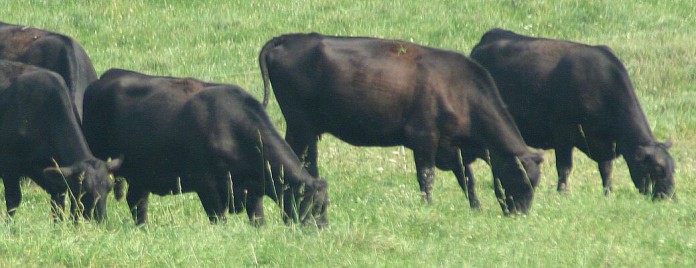Here we are at the beginning of another year. As a grazier, you may want to take a few minutes to make some grazing resolutions for the new year, if you have not already done so.
If you need some help, here are a couple of areas you may give some thought to.
Mud management
I thought this was an appropriate topic given our winter (or lack thereof) as I write this at the end of December. We had a number of days of rainfall and that, combined with temperatures in the 40s or higher, when added to the hoof action of livestock on pastures, can often add up to mud.
Do you have a plan to deal with muddy conditions when they occur? This might be a good place to start with a New Year’s resolution because mud can be detrimental to the grazier in several ways.
Grazing livestock that have to walk through mud that is hock level or deeper have increased nutrient requirements. Mud on the animal’s coat will decrease the insulating ability of that coat, resulting in an increased energy requirement for the animal to maintain body heat. If livestock are creating mud due to the environmental conditions and stocking density, then the sod base of those pasture paddocks is being destroyed.
Weed issues
Weed species are likely to invade those muddy areas. Some of the common weeds that show up once a sod has been opened up include pigweed, ragweed, lambsquarter, foxtails, barnyard grass and goosegrass.
As these weeds invade those beat up muddy areas, the overall paddock productivity and forage quality are reduced. Finally, we must consider some of the environmental and social costs of mud. Muddy conditions open our pasture paddocks up to soil losses from erosion. When soil moves offsite through erosion, the concern is that sediment and nutrients can end up in groundwater sources and degrade water quality.
That soil movement also can reduce pasture productivity, as organic matter and nutrients are lost. The social cost of mud relates to the image that the non-farm community receives: the impression that it creates.
Generally, the image or impression a rotational grazing operation creates for the non-farm public is very positive, but livestock in mud during the winter creates a negative image. As our rural-urban interface increases and public interest in how livestock are raised increases, it puts pressure on the livestock owner, including grazing operations, to be conscious of the non-farm public perception.
If mud management is one of your New Year’s resolutions, consider installing a heavy use feeding pad that can be used to pull livestock off paddocks when conditions are such that mud is going to be an issue. Talk to your local Natural Resource Conservation Service and Soil and Water Conservation District office about sizing the pad and construction requirements. In some cases, there may be construction cost-share dollars available through the Environmental Quality Incentive Program (EQIP).
More fencing
Another good resolution for graziers is to add more fencing. In particular, fencing that will allow you to create more pasture divisions. Dividing pastures is a means to multiplying pasture productivity.
More pasture divisions will allow you as the grazier to have more control over where livestock graze, when livestock graze a particular area, and for how long they graze an area. More pasture divisions allow you to manage and put into practice the essential grazing principles of take half, leave half and allow the grass a rest period. I have yet to meet a grazier who regrets putting in more fencing to create more pasture divisions, so go ahead and make some fencing plans for the coming year.
Over the course of my career I have worked with graziers who have added paddock divisions but have not reaped the benefits of those added divisions because of water issues. If you can’t provide water year-round to each of your pasture paddocks, particularly during the summer months, then an appropriate resolution might be to work on solving that issue.
Over the years, I have seen some creative water options and visiting other graziers and attending pasture walks, grazing schools and grazing conferences may be sources of inspiration.
Weed control
One final area that may be considered as a resolution for the coming year is weed control. If you have areas of your pasture where weeds have invaded and that your livestock are not consuming, then you are losing grazing area and pasture productivity.
If any of those weed species are poisonous, then you have an animal health concern, as well. There are options for weed control. Try to figure out why a particular weed or weeds are invading the pasture. There may be a management solution such as protecting the sod base from over grazing, or keeping livestock out during wet periods.
Sometimes weeds are palatable when grazed young and increasing stocking density can reduce livestock grazing selectivity, resulting in those weeds being consumed. I have seen some graziers add another livestock species to help with weed control; for example, adding some sheep or some goats to a cattle operation. In some cases, an herbicide application may provide a solution. If an herbicide is used, always read and follow the label directions.
We don’t know what 2016 holds in store for us, but carrying out some of these grazing resolutions can provide graziers with the flexibility they need to manage through whatever nature brings our way.













